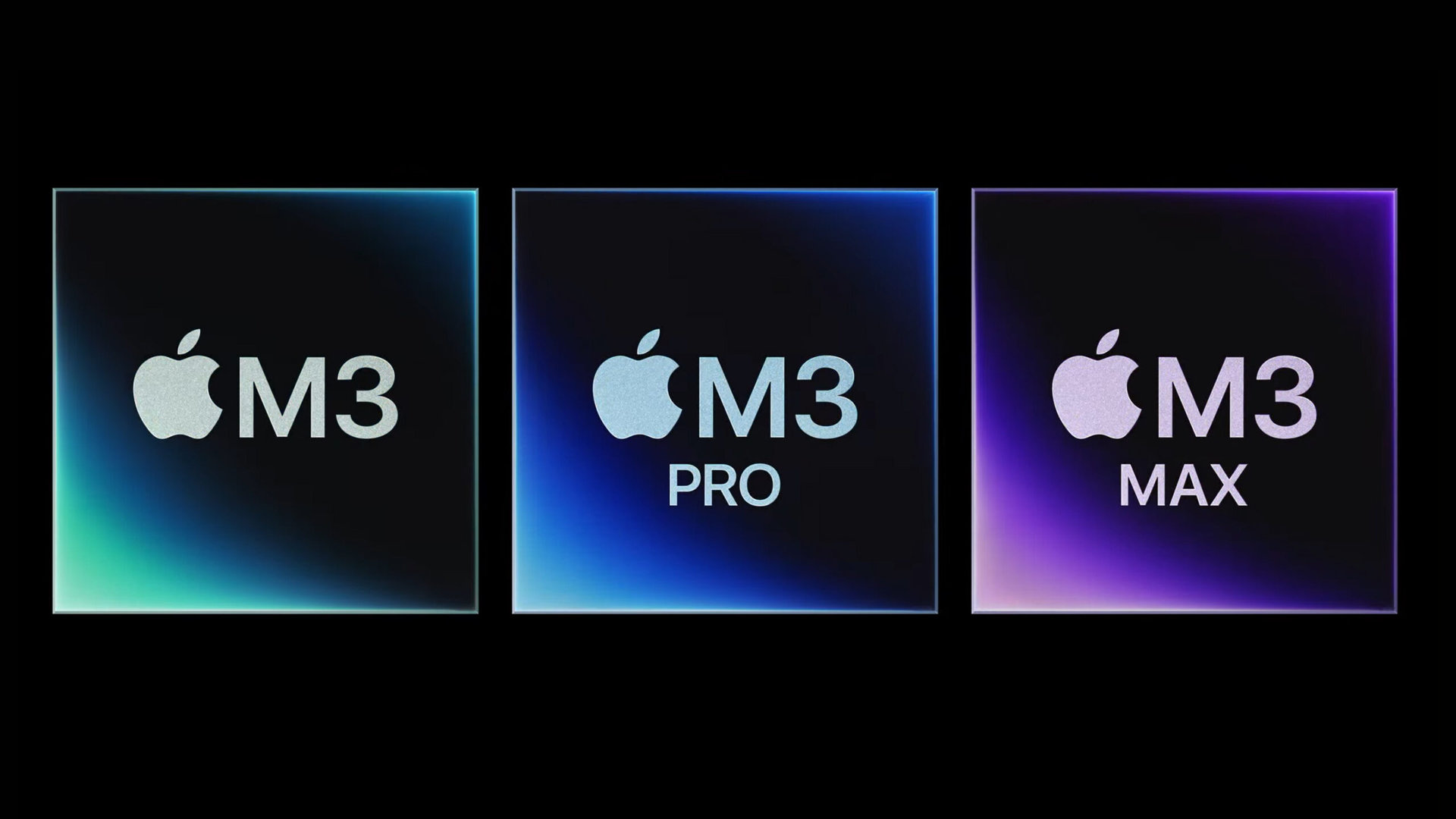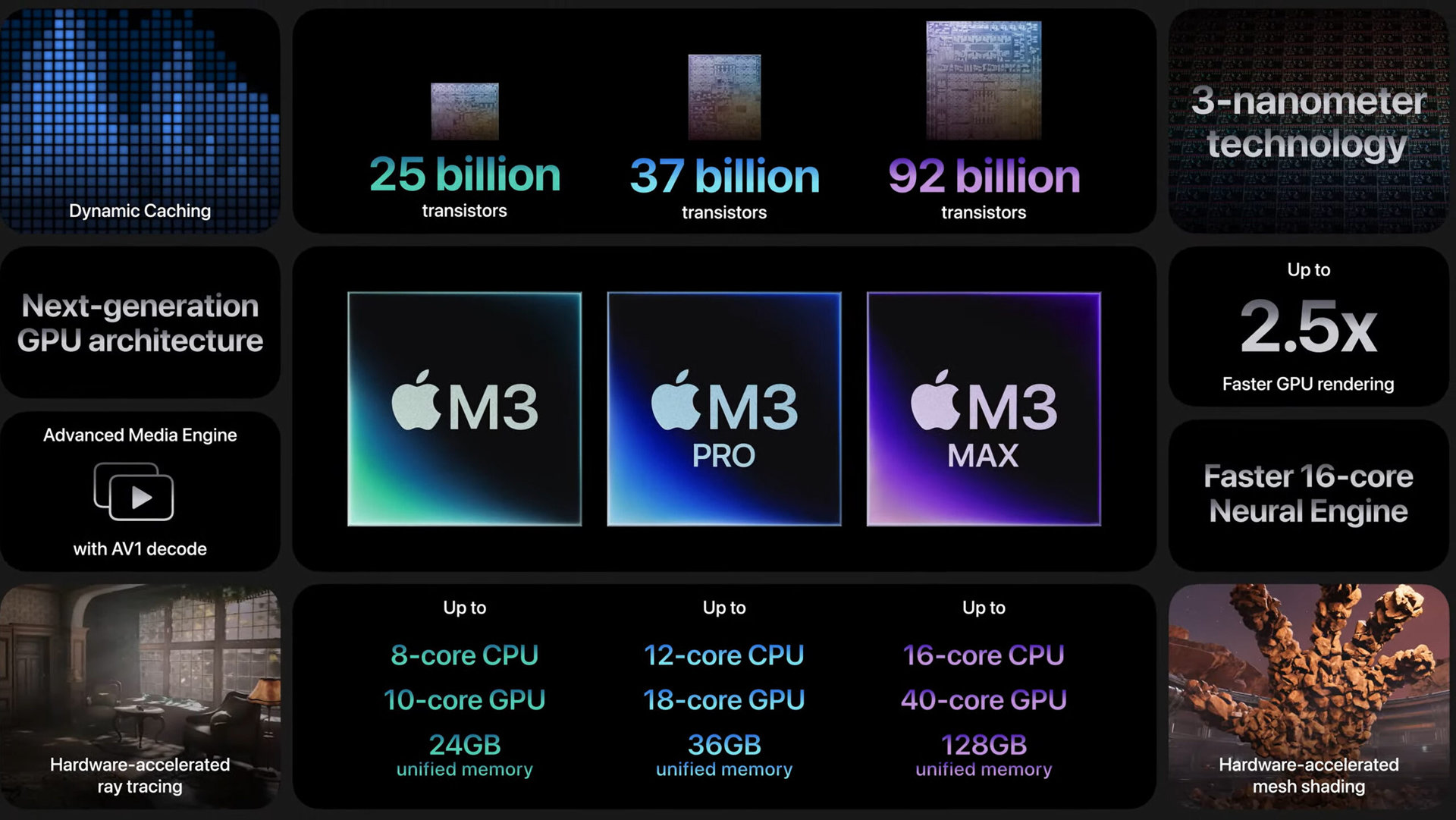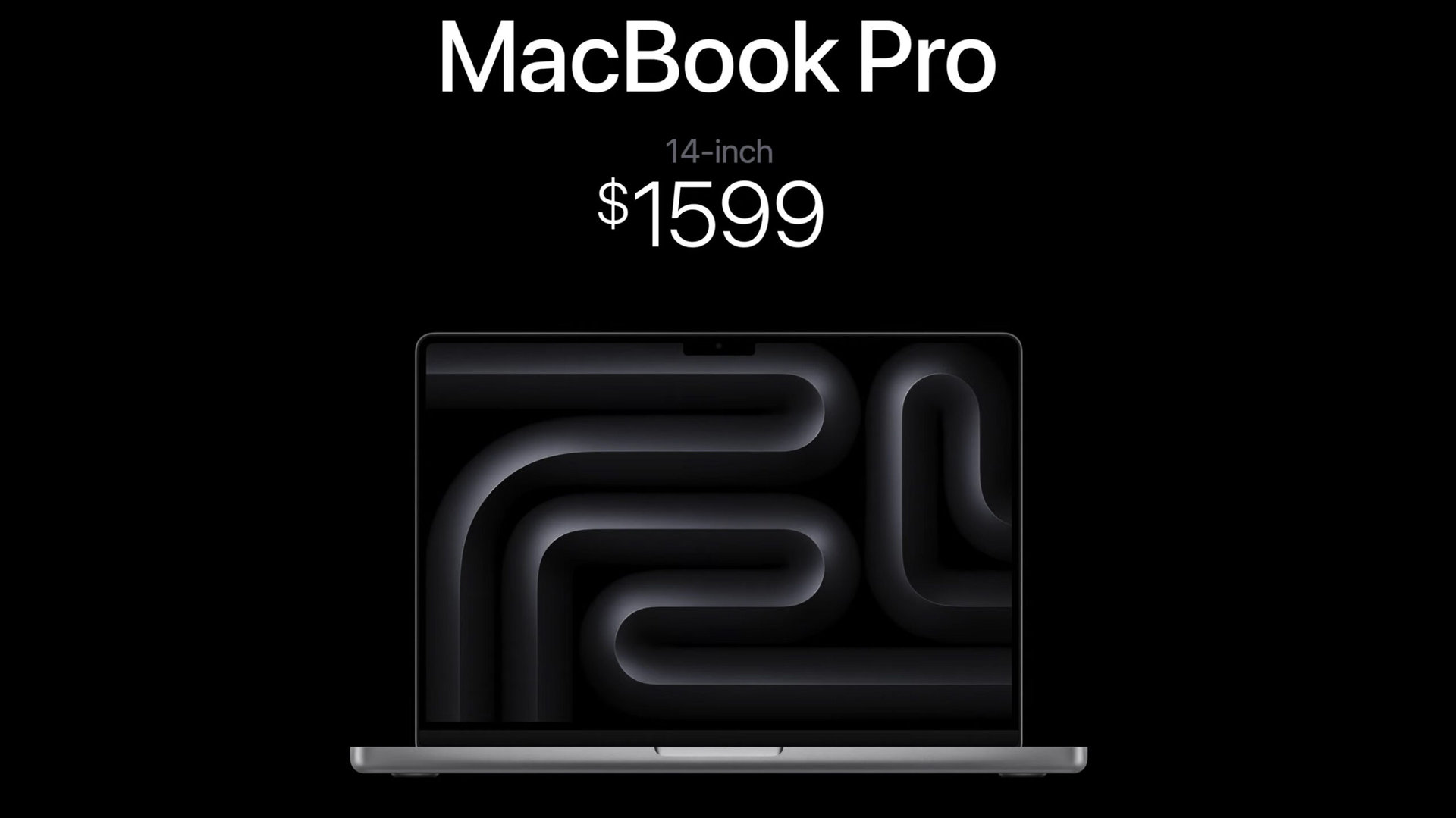Affiliate links on Android Authority may earn us a commission. Learn more.
Apple announces three new M3 processors and really wants you to game with them
Published onOctober 30, 2023
Update, October 31, 2023 (11::55 AM ET): In the article below, we originally had two erroneous bits of information. We called the M3 Max the most powerful M-series processor ever, but the M2 Ultra still beats it. Additionally, we said the M3 Max was the first Apple silicon to support 128GB of unified memory, but the M2 Ultra also supports this. We regret these errors, and the text has been modified to reflect accurate information.
Original article, October 30, 2023 (09:18 PM ET): During its “Scary Fast” video event today, Apple unleashed some new silicon for MacBooks and PCs. Unlike previous years, Apple didn’t launch one or two M-series processors — it launched three simultaneously. The new M3, M3 Pro, and M3 Max are ready to power MacBook Pros and the newly upgraded 24-inch iMac.
As usual, Apple spent most of the launch event time talking about how much faster M3 silicon is than previous chips. It also took some digs at Intel because of how much better these chips are than even the most powerful Intel-based Macs. However, the most interesting thing about this event was the number of times Apple mentioned playing games on Macs. It showed Mac-based gameplay footage from a few different games, including Baldur’s Gate 3 and the Myst remake. It’s clear that Apple is starting to push gamers to accept Macs as viable gaming machines, although who knows how well gamers will listen.
Regardless, what can you really expect from the latest M3 chips? Let’s dive in!
Apple M3 chips: The vanilla, the Pro, and the Max

Regardless of which chip you choose for your next Mac, there are some base-level features and specs you’ll see across the board.
First, all M3 chips are built using a 3nm process, the first chip for a personal computer with this build. A 3nm build will allow for breakneck speeds while also being more power-efficient.
All M3 chips also feature a next-gen GPU. While faster and more powerful across the board, the GPU also supports some new features. Hardware accelerated ray tracing is one of them — a first for any Mac. Apple also has a new feature called Dynamic Caching, which it is calling an industry-first. This feature allows memory allocation on hardware in real-time, a stark contrast to the software-based allocations that happen on most other systems. Finally, there’s also a new Mesh Shading feature that enables more complex scene rendering in both video games and 3D video programs.
One of the smaller but no less exciting new features of all M3 chips is the introduction of AV1 decode. This will allow for high-quality video rendering faster and more efficiently than other popular codecs.
Those are the things you’ll find in all M3 chips. Now, let’s talk about what differentiates each one.
What to expect from the M3, M3 Pro, and M3 Max

Here’s what each chip delivers.
M3
The vanilla silicon features an 8-core CPU and a 10-core GPU. It can support up to 24GB of unified memory (on-board RAM).
M3 Pro
The middle child in the M3 family has a 12-core CPU and an 18-core GPU. You can order it with up to 36GB of unified memory.
M3 Max
The most powerful M3 chip so far comes with a 16-core CPU and a bonkers 40-core GPU. It can also support up to 128GB of unified memory.
When can you get the new M3 silicon?

Apple will launch the first M3-based Macs next week, with pre-orders for M3 and M3 Pro models open now. Unfortunately, the first systems with M3 Max chips won’t land until later in November, with Apple declining to give anything more specific than that.
The cheapest laptop with an M3 chip (so far) is the 14-inch MacBook Pro with the standard M3. It will start at $1,599. The cheapest iMac with an underpowered version of the standard M3 is $1,299.
For more information on M3-powered Macs, check out our “Scary Fast” roundup at the link.